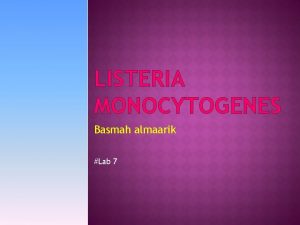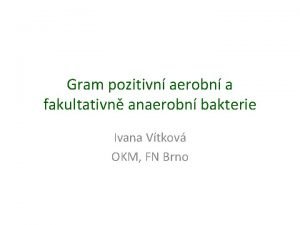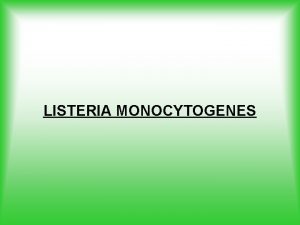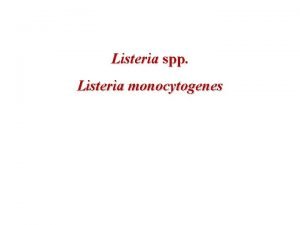Investigation of Listeria monocytogenes Attachment and Colonization on



- Slides: 3

Investigation of Listeria monocytogenes Attachment and Colonization on Plants Haley Clapper, B. S. Biology Faculty Advisor: Dr. Elizabeth Shank Department of Biology

Research Questions and Significance Background • Listeria monocytogenes (LM) is a human pathogen that causes the foodborne illness listeriosis • ~ 1, 600 individuals are infected with LM in the U. S. annually; 90% of those require hospitalization and 30% die due to infection-related symptoms • LM is a ubiquitous environmental microbe that has been detected in soil, water, and on vegetation, but its environmental life stage is vastly understudied Research Questions 1. Does LM attach to plant roots? 2. Do other soil microbes influence LM’s ability to attach to plant roots? 3. Does LM persist on the plant root once it has attached? Significance Although clinical LM isolates have been extensively studied, little is known about LM in the environment, specifically its interactions with plants and other environmental microbes. Recent LM outbreaks caused by contamination of produce led us to question if LM associates with crops before they reach processing facilities. By understanding how LM attaches to plants, we can potentially reduce or eliminate LM contamination by inhibiting this plant-microbe interaction.

Results Significance • LM readily attaches to the roots of Our results suggest LM can interact, attach, and persist on plant roots. Additionally, the interaction between LM and plants can be enhanced by the presence of other plantassociated microbes. Better understanding of the plant. LM interaction could provide insight into mechanisms that could be harnessed to prevent LM contamination. the plant Arabidopsis thaliana in both nutrient-rich and minimalnutrient conditions. • Pseudomonas fluorescens, a microbe commonly identified in the environment, enhances LM plant attachment. • LM persists on plant roots with no significant decrease in colonization for 72 hours. Future Directions To further explore how LM plant attachment is influenced by other microbes, we will perform experiments with LM and other soil microbes that have previously shown to inhibit LM growth We will compare the plant attachment of clinical LM isolates and isolates from soil samples that we collected.





